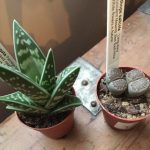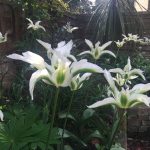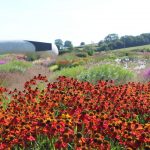I love fungi, looking for them in autumn is one of the things I look forward to most all year. You don’t even need to identify them to enjoy looking at them, in their wonderful colours and shapes. However I have increasing concerns about over picking of fungi from the wild. I don’t want to discourage it entirely, it’s fun and connects people to nature, but I do think it’s worth everyone being a little more cautious about impacts to ecosystems.
Forgotten are the recommendations to take only a tiny percentage of what you see, to take only common mushrooms and steer clear of rarer fungi.
I’ve noticed over the years that mycologists and foragers often say “it’s OK to pick fungi because they’re just like apples.” This is in reference to the fact the visible mushroom is the reproductive spore producing part of a larger organism. Picking the visible body in most cases doesn’t kill the actual fungus, which lives in the ground, in or on rotting wood and leaf debris, or attached to living plants.
However, this seems like a misguided comparison and piece of advice. The clue is in the name: reproductive part. Take away the reproductive part, and even if some spores are shed, we take away a large proportion that could still shed and reproduce in exactly the area and conditions we know they are likely to grow.
This is where a forgotten step has slipped peoples’ minds, which is true of wild plants that produce thousands of seeds. Not all spores or seeds will germinate, in fact, for many species the success rate can be a tiny percentage. The large volumes of spores in fungi are often produced for the reason they aren’t always very successful.
The comparison to apples I’ve seen leads to people thinking they can just take everything. Sharing photos of huge hauls of fungi, more than a single household needs, often of non-edible fungi, and often of quite rare fungi. In recent years, I’ve seen people post huge selections of important CHEGD fungi in groups or on social media as works of art, and must have cleared a significant proportion found in a grassland area to do so. They’d included a number of internationally rare fungi and defended themselves by saying fungi are like apples.
The comparison of fungi to apples – though I do get the intention – has always struck me as an unfair and misleading one that is resulting in over harvesting.
My main reasoning why comparing fungi to apples is wrong
- Apples are almost always cultivated, they are grown for humans to pick not to reproduce.
- Wild fungi are not.
- Apples are easy to plant and grow.
- Wild fungi aren’t generally easy to plant and grow making them more precious than cultivated apples.
- Apples evolved as a fruit to entice animals to eat them to help spread the inner seeds.
- Fungi are largely spore producing, usually airborne, spread by the wind. Removing this part and bringing inside or eating reduces its volume of spores released into the wild, especially in their original spot.
- Apple trees produce hundreds of fruit containing a small number of seeds that in the right conditions can grow easily (note: most cultivated apples are grown from grafts not seeds).
- Fungi can often produce one to a small number of mushrooms producing their spores, once removed may have been their only chance that year to reproduce (not all of course, some fungi grow in dense patches).
- Fungi are often uncommon – there may be only one of that particular fungus within an acre or more.
- Fungi often need very particular conditions and habitats to grow – producing thousands of spores may be necessary because they can often be so unlikely to land in the right conditions. Remove one and that significantly reduces its chances.
- Fungi can take a long time to grow to spore producing age.
- Evidently, given just how many spores fungi produce but how few off-spring that leads to in most instances, appreciating each body we pick will have a material impact.
Have fun foraging but with more caution
I’m not saying we shouldn’t pick wild fungi of course, and obviously there are many fungi that are prolific locally and nationally. I’m just sharing a concern that with more people becoming interested in fungi (which is a great thing!) as part of studying nature and foraging, perhaps we need a new and more careful approach to how we encourage people to treat them.
For instance, field guides all recommend picking fungi to take home for ID. Is that still the best advice in today’s world with a significantly larger number of people doing so in a world where all wildlife is reducing? Especially when we have new technology to help identify many fungi without picking them. I can often take photos of the top, the stem and the gills on my phone’s macro lens without picking.
Perhaps our advice needs to be updated to recommend people first try photo ID before eventually picking if they really have to, and emphasising that when foraging, making sure to only pick edible fungi that are known to be abundant in the area. Also re-emphasising to never take all of the spore producing bodies, to always leave a good number to continue the cycle for future generations. Leaving 75%+ of what we find for nature to take its course.
I thought I’d share this concern for discussion, please do let me know what you think in the comments below.




Jack, I am a huge admirer of your work and your contributions to horticulture and conservation.
On this matter, which I feel strongly about as both a professional mycologist and an forager, you are absolutely right, on one count, and almost certainly wrong on the other.
“Mushrooms are not apples”: correct. Just like fungi are not plants. The metaphor is just wrong and not helpful in any way.
Picking sporocarps (mushrooms) threatens diversity an fungal populations: this is most likely to be incorrect. I will not bore you and the readers with extensive anecdotal, and historical evidence for this (just look at those environments and human cultures where foraging is endemic and extensive should convince you of this).
As an academic mycologist I think looking at the published (in peer-reviewed literature) evidence should guide us. I refer you to the extensive, careful and scholarly work of colleagues in Switzerland and elsewhere.
For example, here:
https://doi.org/10.1016/j.biocon.2005.10.042
https://doi.org/10.1139/b95-349
https://doi.org/10.1016/j.foreco.2006.08.342
My conclusion is that I will certainly continue to traipse around the countryside admiring with never ending wonder the shapes, colours and surprises the sporocarps of our fungal friends. I will also forage with delight those I think may be delicious, certain that I am not doing any damage by taking home the odd kilogram or so (on the rare occasions I am so lucky).
Much more damage to the local and global environment is done by: driving gas-guzzling SUVs and other assorted cars to the woods, or to the garden centres (including the beautiful RHS sites); or insisting on garden practices that reduce biodiversity and add pressures on scant resources of water and land.
So please stop demonising those of us who collect the few lovely edibles, and (at times) take home the few unknows to identify, just for the fun of it. Conservation efforts need to focus elsewhere.
Hi Pietro,
Thanks for the thoughtful reply and for treating this as the question and discussion starter as I intended. I feel it’s unfair you say I am demonising foragers when I make it crystal clear twice in the article I do still want people to pick fungi, but with more consideration – particularly around rare fungi. The rule of never pick the last fungi is a longstanding one I didn’t invent.
I’ve looked at two of the reports you linked to, thanks for sharing these:
Looking at research like this over longterm impacts and a big area is definitely what I would like to see and I’ll investigate too.
To reiterate, I don’t want people to stop foraging or picking for identification where needed. All I am saying is that comparing fungi to apples is very misleading which I’m glad you agree on, I think. My concern I believe is a valid hypothesis that over-harvesting of fungi could and probably does impact reproduction, how can it not? But willing to be proven wrong by research. In the meantime, I remain concerned.
All the best,
Jack